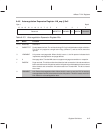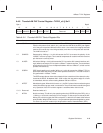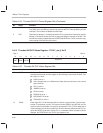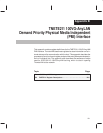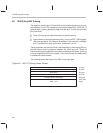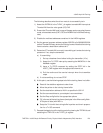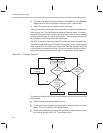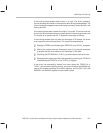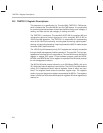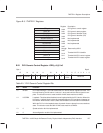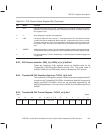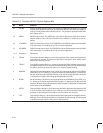
100VG-AnyLAN Training
B-3
TNETE211 100VG-AnyLAN Demand Priority Physical Media Independent (PMI) Interface
The following describes what the driver must do to successfully train:
1) Assert the INTEN bit in the TLPHY_ctl register to enable MII interrupts to
ThunderLAN from the voice grade (VG) PHY
2) Ensure that ThunderLAN is not in copy all frames mode, copy short frames
mode, or broadcast mode (CAF, CSF, and NOBRX bits in the NetCmd reg-
ister)
3) Disable the multicast addresses contained in the HASH registers
4) Set the general purpose address register AREG0 to 0x000000000000h
so that ThunderLAN may receive the training frames. Note that the training
frame contains a destination address of 0.
5) Determine if ThunderLAN is currently transmitting as it enters the training
procedure. If so, stop the transmitter.
a) If transmitting:
i) Set up a deadman timer before halting the transmitter (10 s)
ii) Assert the Tx STOP interrupt by asserting the MASK5 bit in the
NetMask register
iii) Issue a Tx STOP command by setting the STOP bit in the
HOST_CMD register with the appropriate channel set
iv) Exit the routine and the service interrupt when the transmitter
stops
b) If not transmitting, do not use STOP
6) At this point, use the following steps to build the training frame in a buffer:
Read all the statistics registers to clear them
Move the pointer to the training frame buffer
Set the destination address to NULL as specified in 802.12
Set the source address to your adapter’s source address
Set the Req config field to the appropriate options
Fill in the rest of the training frame (two bytes in the Allow config field +
675 bytes of data) with NULLs
Setup the Tx list with the training buffer’s pointer and size in prepara-
tion for a Tx GO command
7) Request the beginning of the training period by clearing the TRFAIL bit and
asserting the TRIDL bit in the TLPHY_ctl register.



